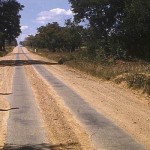“The growing number of digital billboards on U.S. roads and highways consume large amounts of energy and are creating a wide variety of electronic waste, according to a new report (pdf). The new study says the typical digital billboard consumes about 30 times as much energy as the average American household.”
“The digital billboards use more efficient LED (Light Emitting Diode) lighting than traditional signs, but deploy so many of the LED bulbs on each billboard that energy use is high; traditional billboards use just one or two large bulbs to illuminate signs. In addition, digital billboards are illuminated day and night, and require cooling systems that use more energy.”
Source: Yale Environment 360.
Previously: Viva Las Vegas – LEDs and the energy efficiency paradox.





